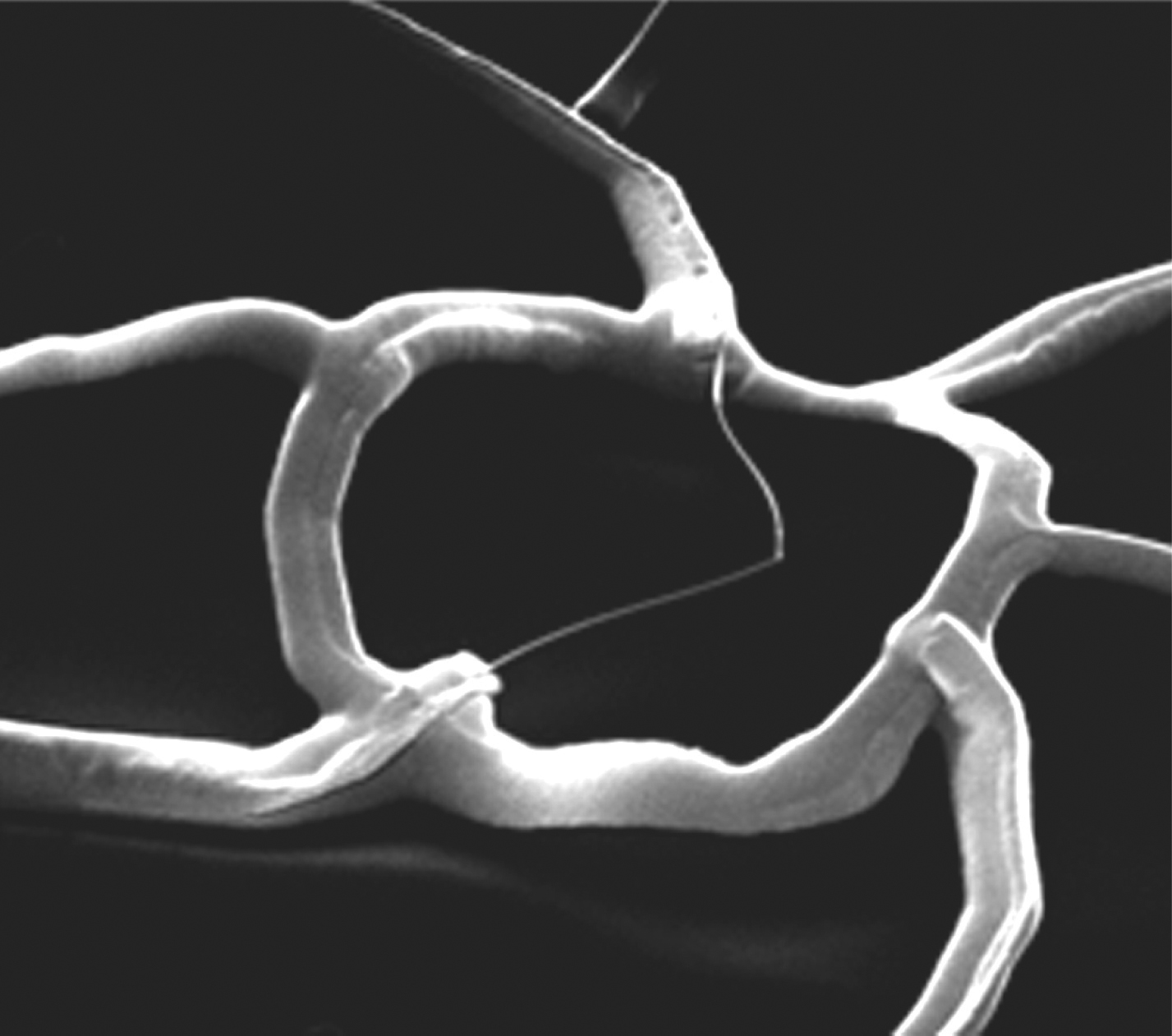In the ‘nanoworld’ a human hair is huge: roughly 100,000 nanometres in diameter. Dr. Peter Grütter, a McGill University physics professor, has committed himself to understanding the miniscule realm of nanotechnology.
Dr. Grütter’s group develops microscopes used for research in the emerging field of nanoelectronics—tiny computers that use the nanometre structure of various systems to process, store, or transmit information.
This isn’t your average high school scope—the machine works by detecting intermolecular forces. It then uses the information to create an image, “by controlling the [intermolecular] forces, which are a function of distance, large separations create relatively smaller forces,” Dr. Grütter explains.
His team also applies these tools to a variety of other applications, including analyzing information processing in the brain (by studying synapses—the junctions between neurons), plastic deformations, charge generation in organic photovoltaic systems, and the limiting factors in lithium ion batteries.
It is a unique field involving close collaboration with other facility experts in fields such as “modeling, neurons, biochemical sensors in academia, and industry.”
Dr. Grütter was one of the founding members of NanoQuebec—a non-profit agency funded by the Quebec government that funds nanotechnology research.
The agency provides “fix[ed] funding to 11 laboratories, so that they can hire qualified personnel to run equipment in the labs, and they [also] fund university-based research projects,” Dolores Martinez, Scientific Director of NanoQuebec, said.
At McGill, NanoQuebec provided the first type of funding to two laboratories: the Facility for Electron Microscopy Research, and McGill NanoTools Microfab. They are also currently funding two research projects.
According to Martinez, NanoQuebec’s mission is to “support nanotechnology-enabled innovation.” Recently, for example, NanoQuebec funded the developers of an intelligent fiber that can detect blood, sending a distress signal if the wearer is injured.
Nanotechnology is an important field because of the “combination of interesting science and economic [or] societal impact, ” Martinez said. For example, adding nanoparticles to cement can make it stronger. Nanoparticles can also function as an effective drug delivery system for patients.
“[NanoQuebec does] great science internationally, applies it to important societal problems, and produces innovative products … NanoQuebec brings money to the table and engages people,” Martinez said.
At the nano level, “gravity is not really an issue,” she explains. Matter does not act as it does in our macro world. For example, surface tensions are disproportionately large, making water appear impassable.
“There is a tug-of-war between van der Waals forces and thermal agitation: huge van der Waals forces make nanoparticles extremely sticky and thermal forces make them bounce around erratically,” she said. Van der Waals forces occur at the molecular level, and are typically weak.
Another interesting element of the nanoworld, according to Martinez, is that “quantum effects start to play a role: a material’s optical, electrical, and magnetic properties will be affected compared to its bulk form.”
Transferring these properties to the macro-sized world could yield “new types of catalysts that are much more reactive, composites that are much stronger, extremely fast transistors based on quantum effects, high-efficiency fuel cells.” The ‘nanoworld’ offers an infinite number of potential applications.
Martinez believes Nanotechnology is essential in cultivating new technologies such as next-generation quantum computers, high-efficiency organic solar cells, magnetic nanoparticles for targeted drug delivery through the vascular network, and high-efficiency automotive fuel cells.
“Nanotechnology will transform our society, much the same way as the automobile or computers [did], but predicting the future, when and how this will happen, is not an exact science,” Dr. Grütter said.








